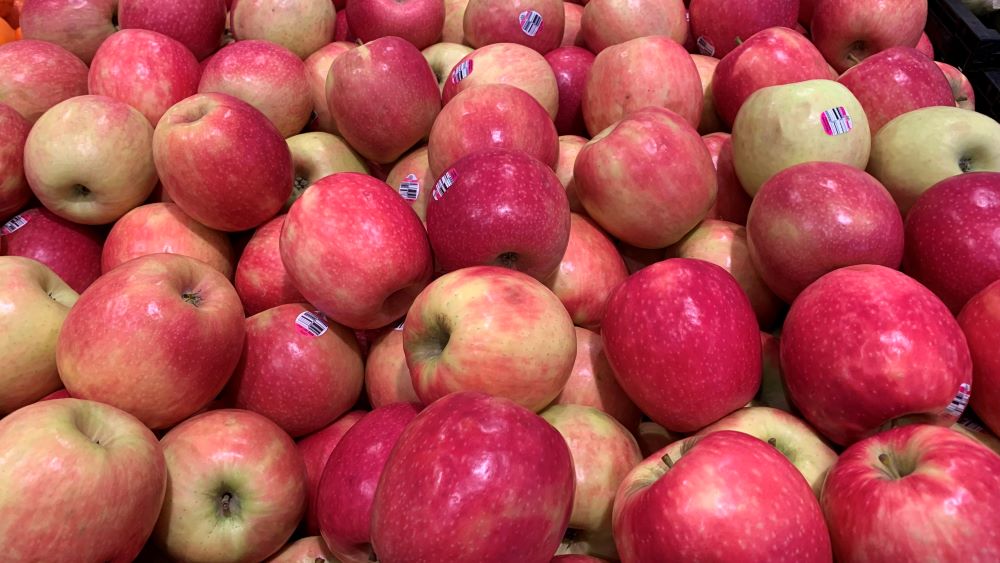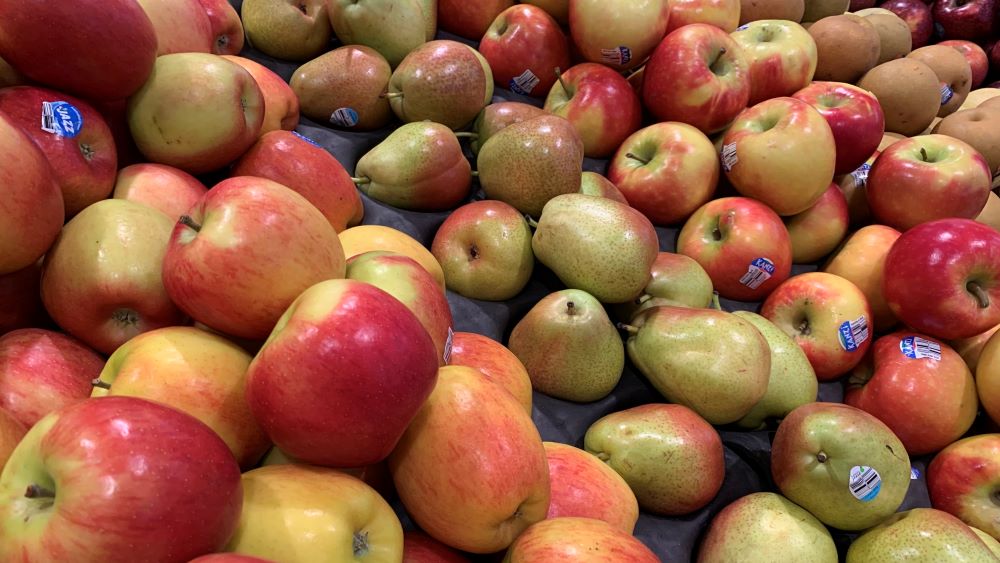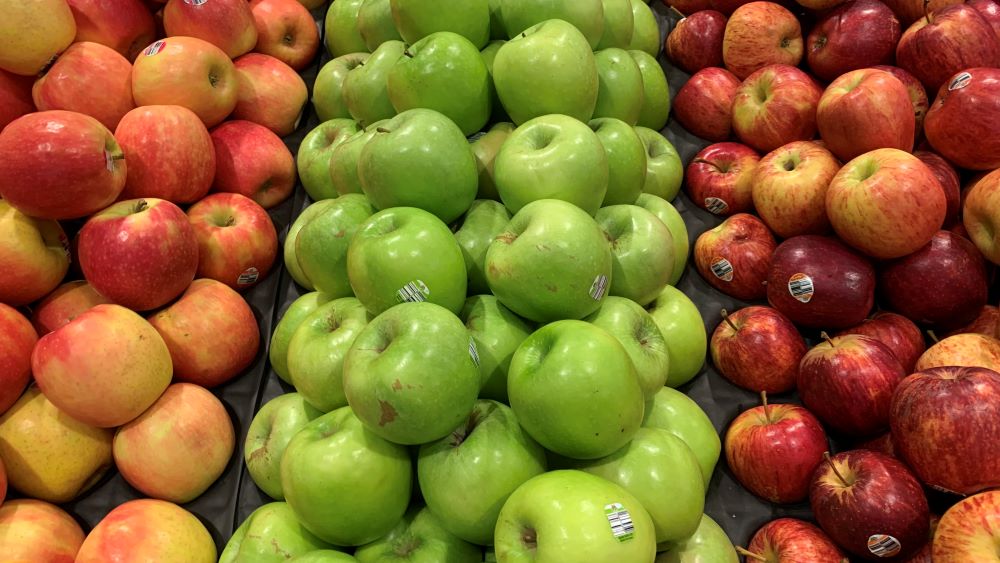Many people may not be aware of this, but many of the foods we eat today are man-made, and this includes apples. By “man-made,” we mean that the type of apples we eat today do not grow naturally. Instead, they are hybrids that have been bred a certain way to produce certain results.
This article will explore the origins of the apple, where they are grown and the best varieties for your home garden.

The Origins of the Apple
Apples are found in a lot of places across the globe but are found most often in areas that have cooler climates, including North America and certain parts of Europe.
Originally, the apple called the Malus sieversii was found in Central Asia, and this was a type of apple tree found growing in the wild. Even today, you can find these trees growing in the wild in the Central Asia region. The apple plant is part of the Rosaceae family.
Today, there are more than 7,500 known cultivars of the apple tree. Apples have been bred over and over both to improve their taste and to help them withstand the elements a little better.
All of the apple varieties and species eaten today have been bred to achieve certain results. Most of the apples grown today are grown either for cooking or for eating raw. And while we don’t know exactly when apples were domesticated, estimates put it at around 4,000 to 10,000 years ago.

When farmers bred these apples, they did so mainly to develop or improve certain traits, such as size, firmness, fruit acidity, soluble sugar, and even color.
That being said, while most of the apples we eat today are bred as hybrids, there are still apples that grow in the wild, and these include crabapples. These, however, tend to be less tasty and somewhat harder than the hybrid apples, which are usually the perfect taste and texture.
Today’s apples are indeed man-made and are the result of decades—some people think centuries—of breeding, cross-breeding, and selective cultivation. This doesn’t mean the apples have been genetically modified; most of them haven’t.

Instead, they are the result of human intervention and various cultivation techniques that have resulted in the fruit we think of today when we think of apples.
In What Countries are Apples Grown?
More than 75 million metric tons of apples are grown throughout the world every year, and the countries that produce the most apples are China, the US, Poland, Italy, and Chile. The biggest importers include countries such as the UK, France, Germany, and Russia.
China produces more than 41 million metric tons of apples per year, which is more than half of the world’s production. The European Union (EU) produces more than 11 million metric tons, with the US producing about five million metric tons and Turkey, about three million.
Where Were Apples First Commercially Grown?
Modern apples are a domesticated version of wild apples, or crabapples. Crabapples are a little on the bitter side, which is why they are not eaten raw but instead are used to make numerous dishes, mostly desserts and jams.
Between 4,000 and 10,000 years ago, the first domesticated apple (using the crabapple) came to be in the Tien Shan mountains of Central Asia. Most experts believe it was the area now called Kazakhstan.

When apples were first domesticated, they were used mostly for the production of cider. Next came more domestication and the spread of apples to many new areas, and lastly, the breeding of apples.
Most experts think crabapple seeds likely came from the cider production phase, as numerous Bronze and Neolithic Age sites across Eurasia have contained these seeds in the remains left behind. Apples grow best at intermediate elevations, or between 3,000 and 5,200 feet, depending on the quality, size, and growth habit desired.
Natural Apples Still Exist
Natural or wild apples still exist. The main areas where you can find these wild apples include forested areas with a temperate climate, the savanna regions of many tropical areas, and either in fields or on the edge of woods.
You can find wild apples almost anywhere throughout the Northern Hemisphere, so if you’re out hiking or camping somewhere, don’t be surprised if you run into a wild apple tree when you least expect it!
Check out this quick video on how so many varieties of apples came about.
Best Varieties to Grow at Home
There are numerous reasons to grow apples at home. The trees start bearing fruit in just a few years, and they grow well in most parts of North America. The best varieties to grow at home include the following:
1. Cox Orange Pippin
This is a sweet apple that has hints of mango and orange in it. It has a fresh taste and is very crispy.
2. Granny Smith
These green apples do well in zones 5–8 and have a sweet-tart taste. You can use them in ciders and pies, and they can be stored for about 3–4 months, which means you don’t have to eat them immediately.
3. Liberty
Liberty apples are very low-maintenance and have a nice sweet-tart flavor. They are perfect for drying and for making various desserts.
4. Red Delicious
These are America’s favorite apples and are crisp, sweet, and juicy. They are perfect for making desserts and eating fresh, and you can store them for up to six months.
5. Winesap
Winesap apples taste a little different than many other apples, with a spicy, wine-like flavor that people love.
Are Apples a Hybrid Fruit?
Apples are indeed a hybrid fruit. With so many species and cultivars, it’s easy to understand why this is such a versatile fruit.
While there are still wild apples that can be found in certain areas, the type of apple most people enjoy either as a snack or for making jams and pies is the result of many years of breeding to get to the varieties we have today.

Conclusion
Apples are indeed man-made and are the result of many years of cultivation and breeding. There are two main types of apples: apples made for eating raw and wild apples used mostly for the making of jams and pies. Wild apples have to be cooked, and they get sweeter when you cook them.
I am an accredited practicing dietitian, experienced gardener and a dedicated cook. I love writing and sharing my experience so you can learn from my successes and mistakes.
